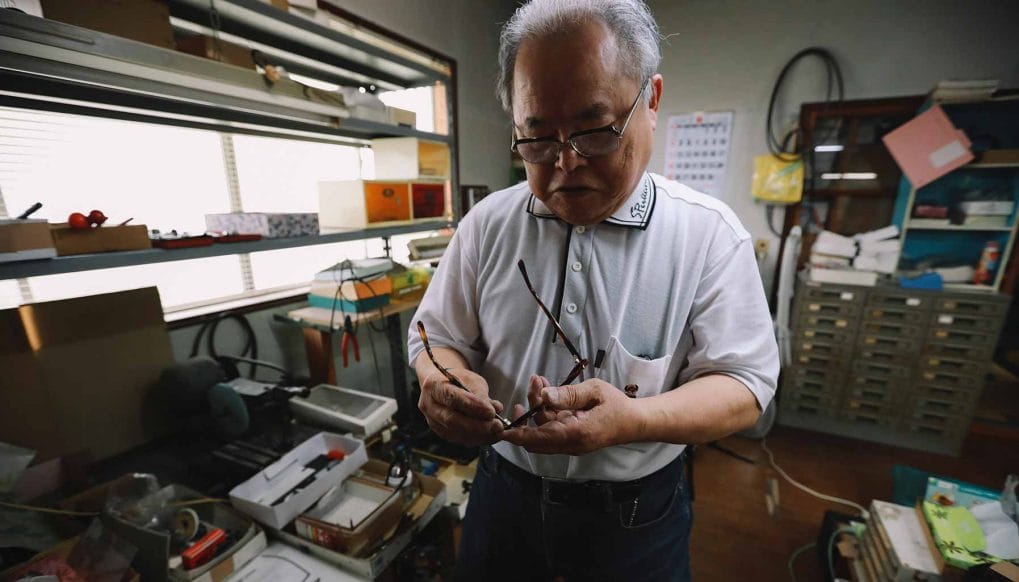A Craftsman’s Calling
In the luminosity of a new handmade eyepiece lies an untold story of old craftsmen in the city of Sabae, Japan.
In his tiny workshop, 77-year-old Yamada Mitsukazu shows me around while explaining the different steps in producing an eyewear by hand. The tools and machines – some used for over 50 years – are set around the perimeters of the tight working space. In this cluttered room, Mitsukazu and his wife have worked together every day for the past 40 years. “I began making eyeglasses when I was 16. I’ve dedicated my entire life to this craft,” he says.
Mitsukazu is one of the very few craftsmen in Sabae city in Fukui prefecture, Japan, who make handmade eyeglasses for a living. What started off as a lucrative job some 70 years ago is now considered a dying business.
Many of these craftsmen are no longer able to meet the demands of mass production. As technology advances, people lose their jobs. And gradually, the services of these artisans are being made redundant. The number of skilled craftsmen has plunged from over 2,000 to just 50 within a period of 40 years.
Sabae is known for inventing the concept of nose pads and developed the use of titanium frames in the 1980s. The small city has created a positive impression on eyewear connoisseurs around the world. However, it remains an insider’s secret. Mitsukazu says, “We work in a very discreet manner. We do not talk about what we do or for whom we work.”
The small network of craftsmen is taken care of by runners who pick up orders from international clients.
“Most of the craftsmen from Sabae have never left this city. Some of us have been cheated and not paid for our work. My role is to coordinate the production, protect the interests of the craftsmen and act as a mediator between them and the international brands,” shares 66-year-old Onami Eizo, who used to be a skilled craftsman himself.
The skills of these craftsmen have finally been put to good use in the past five years. International eyewear brands such as True Vintage Revival (TVR) have paved the way for the craftsmen to get back on their feet. Eizo recalls, “When the TVR team visited an old factory, we were all shocked to find museum-quality pieces alongside the original moulds, tools and old celluloid pieces. Working together with TVR, we brought back the authenticity of eye frames made decades ago.”
After cutting, filing and polishing, the frames go into a tumbling machine for at least 24 hours. Inside a drum filled with small wood pegs and pumice, the process helps to grind the fronts and smoothen the rough edges. “This traditional method also gives the celluloid frames an effervescent lustre and shine all around,” explains Mitsukazu.
Craftsmen also use a traditional mitre cutting technique that keeps the temple joints steadier and more long-lasting. “For the TVR collection, we use authentic materials like Japan-made celluloid and Sun Platinum Metal, a rare material that is only available in Japan. This is important to keep the eyewear light and also looking brilliant when we present it to the customers,” the craftsman shares.
“I picked up this craft 60 years ago because I needed to earn a living. Now, I find satisfaction in making an excellent piece that accentuates the beauty of handmade artistry. So what if I am slower than machines? All I know is that the eyewear I make will outlast trends and I hope to leave behind a legacy to the unknown world,” Mitsukazu says with a smile.













